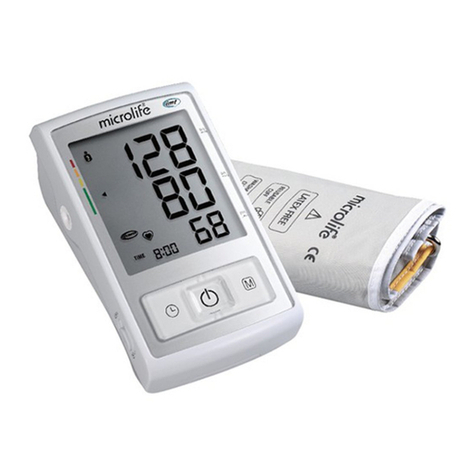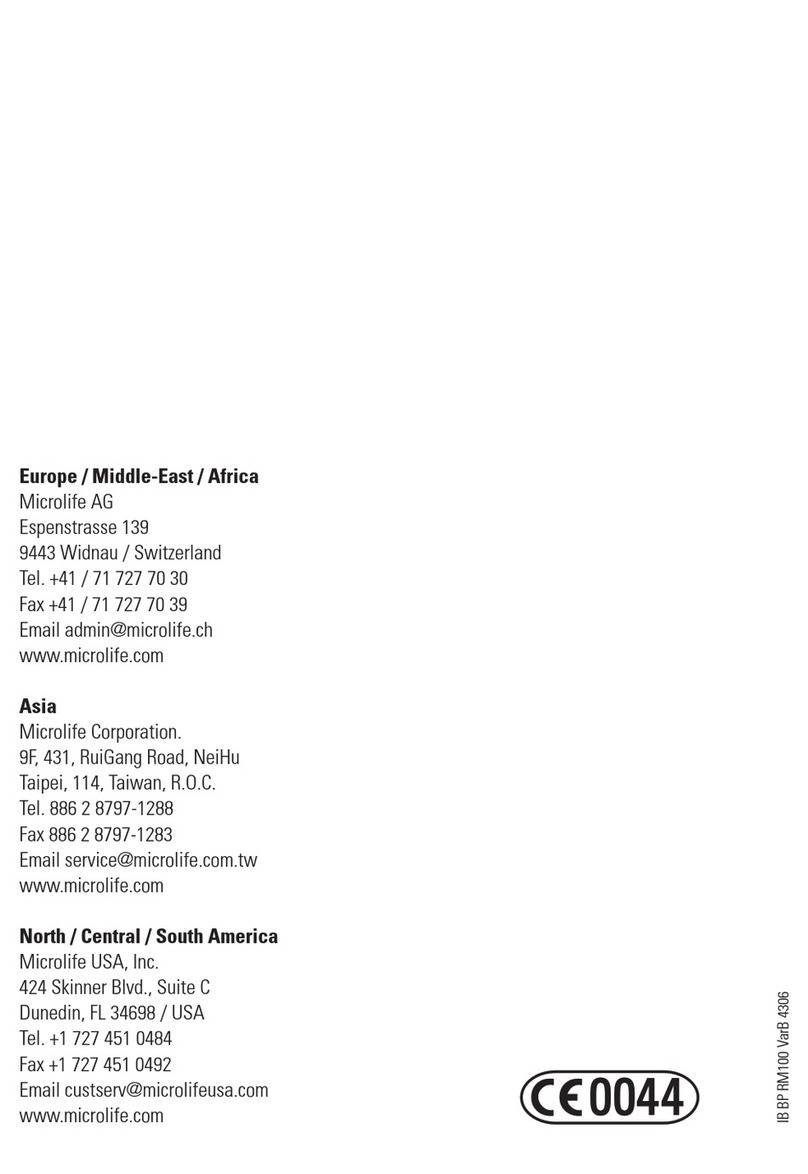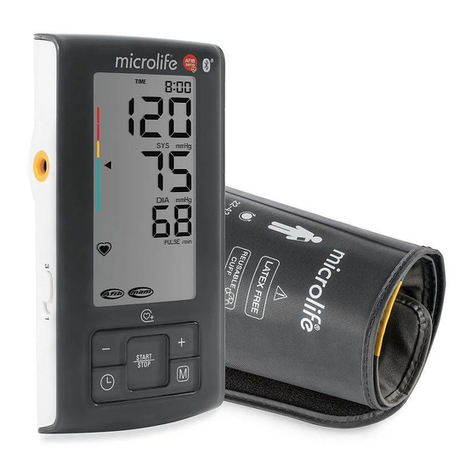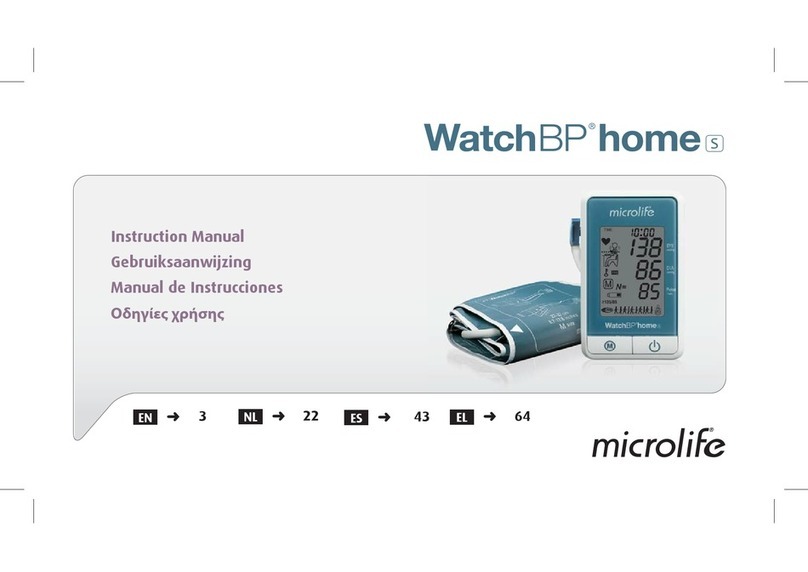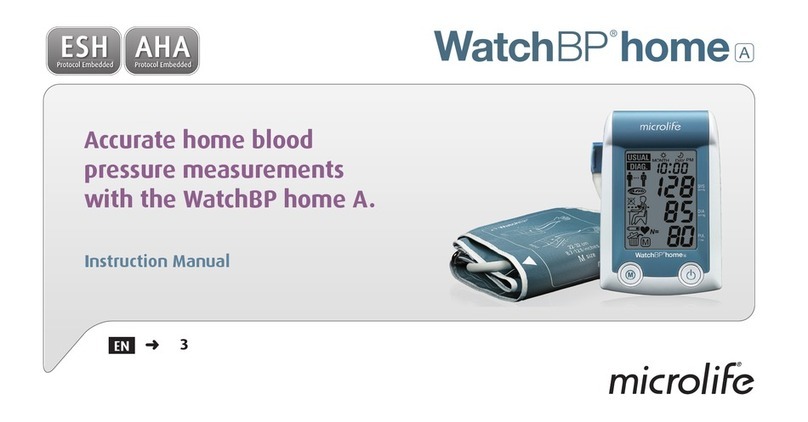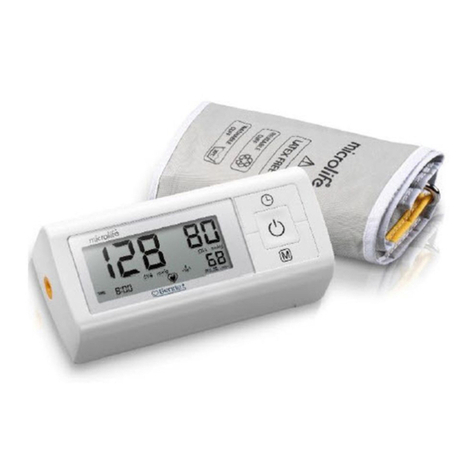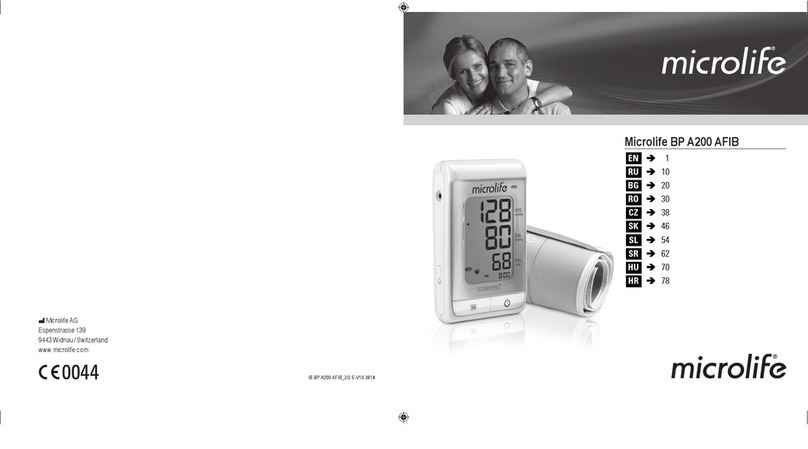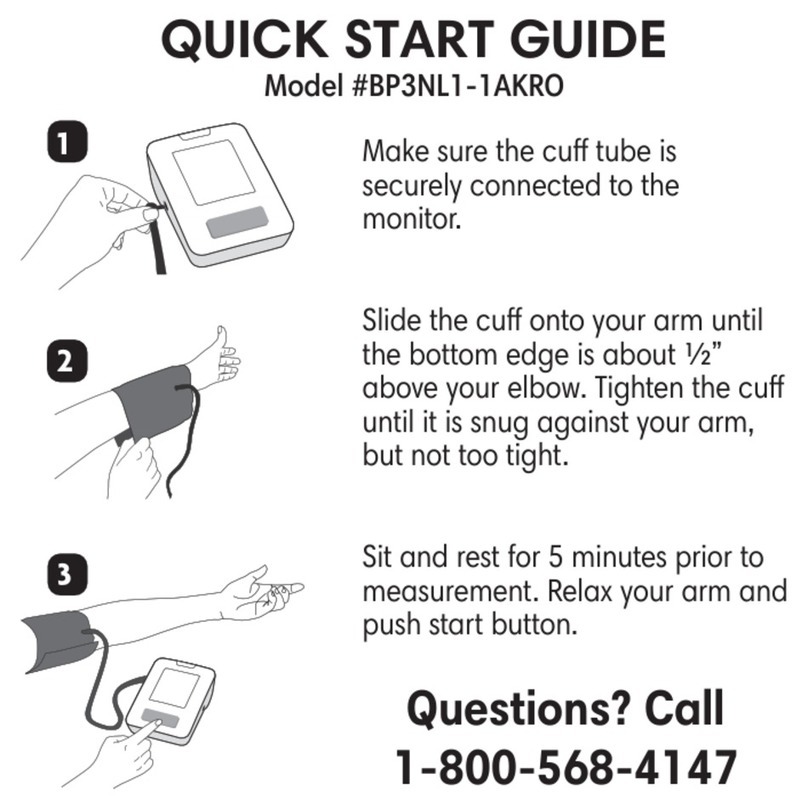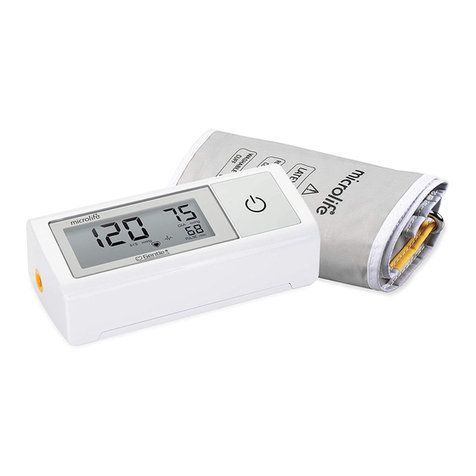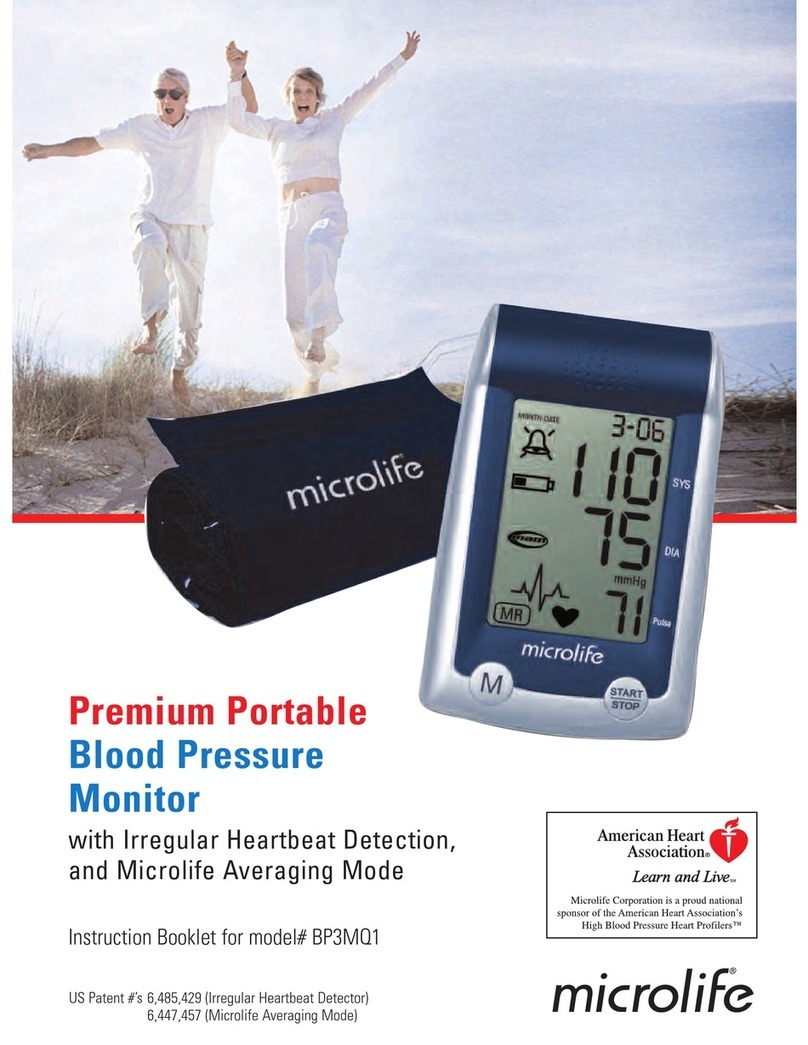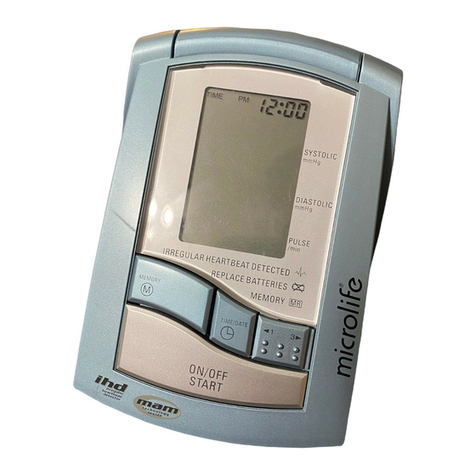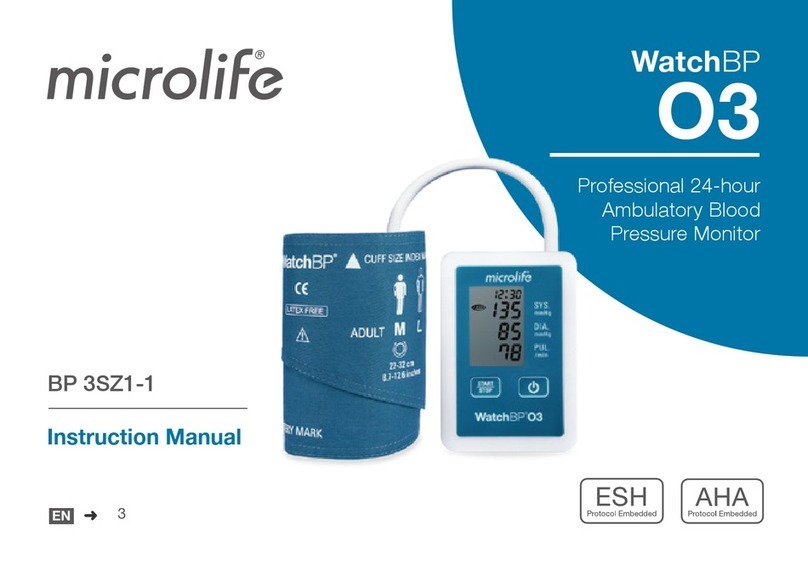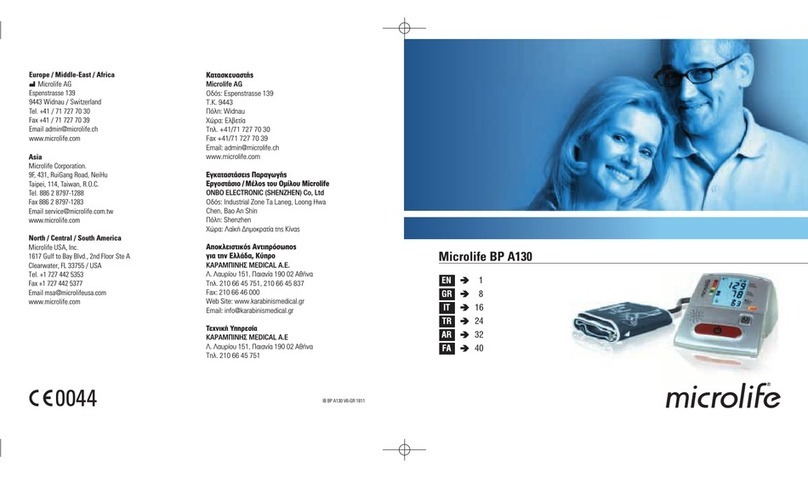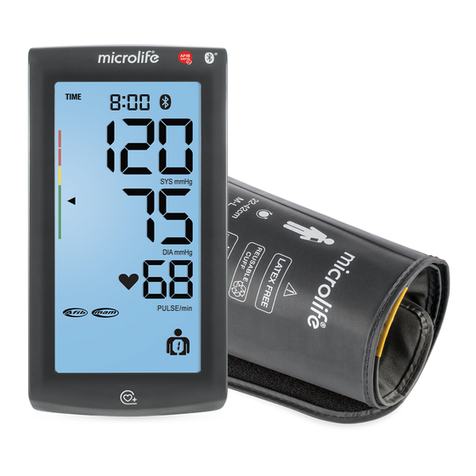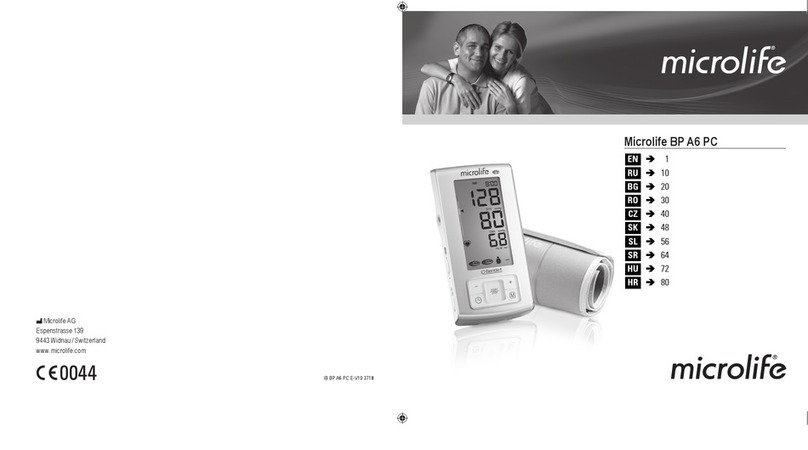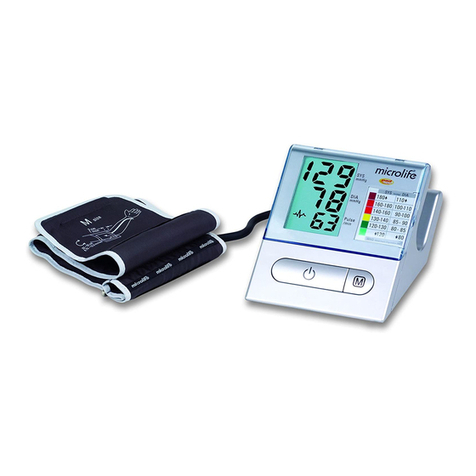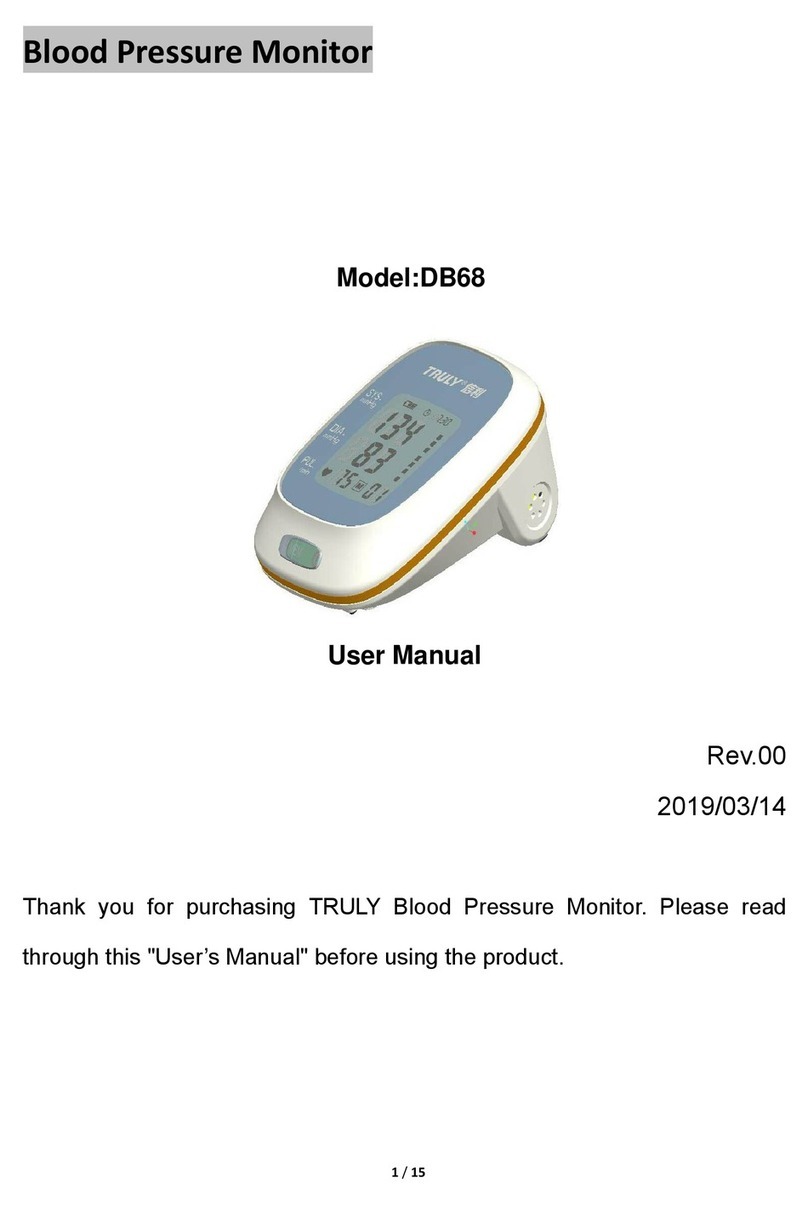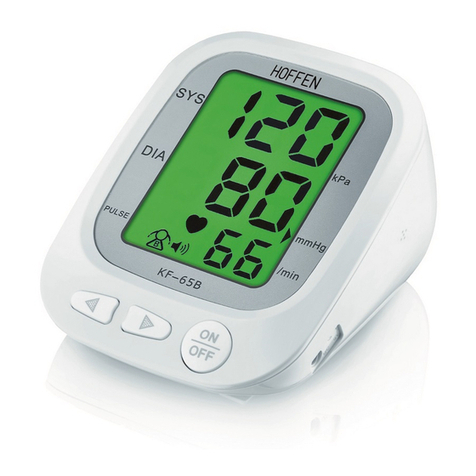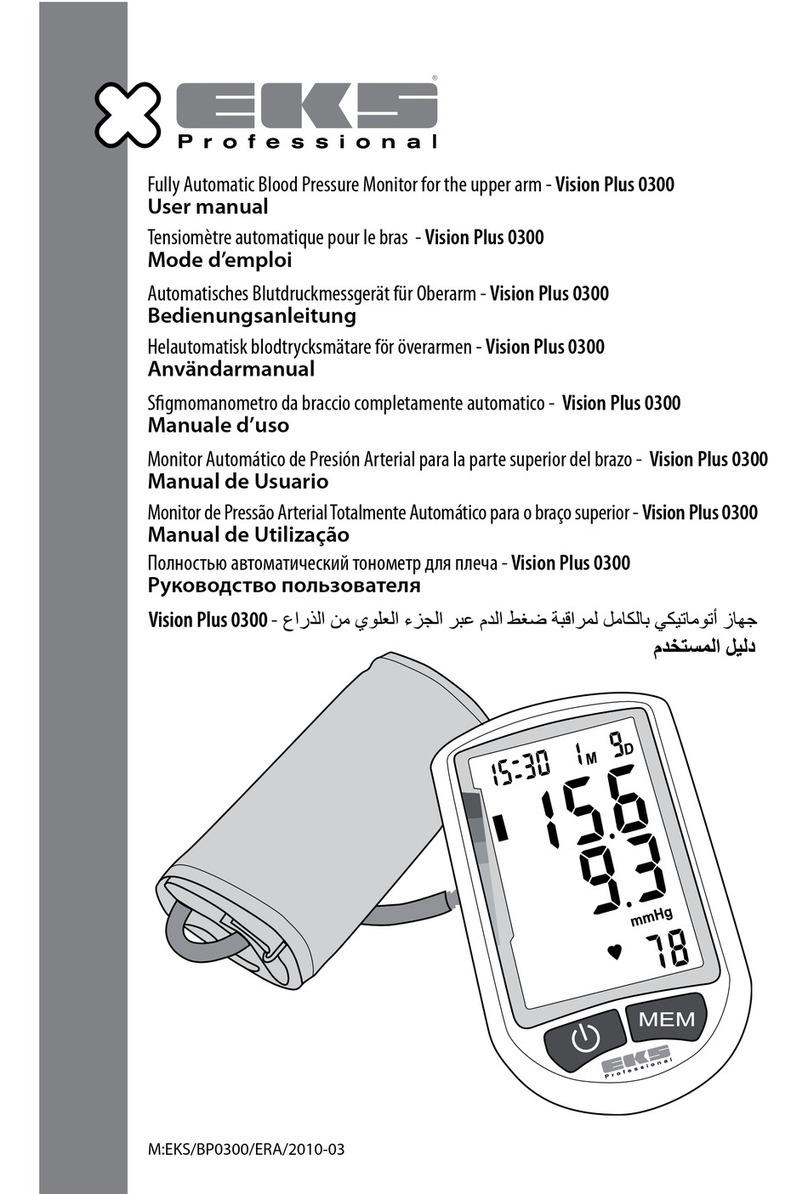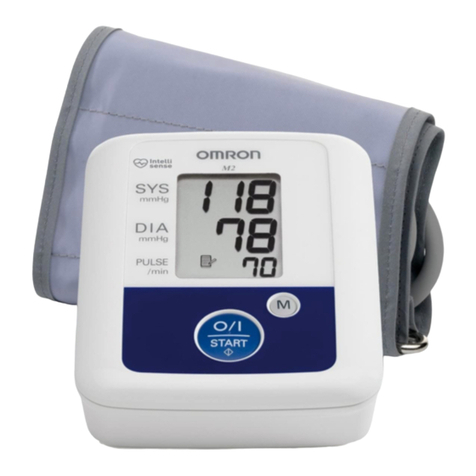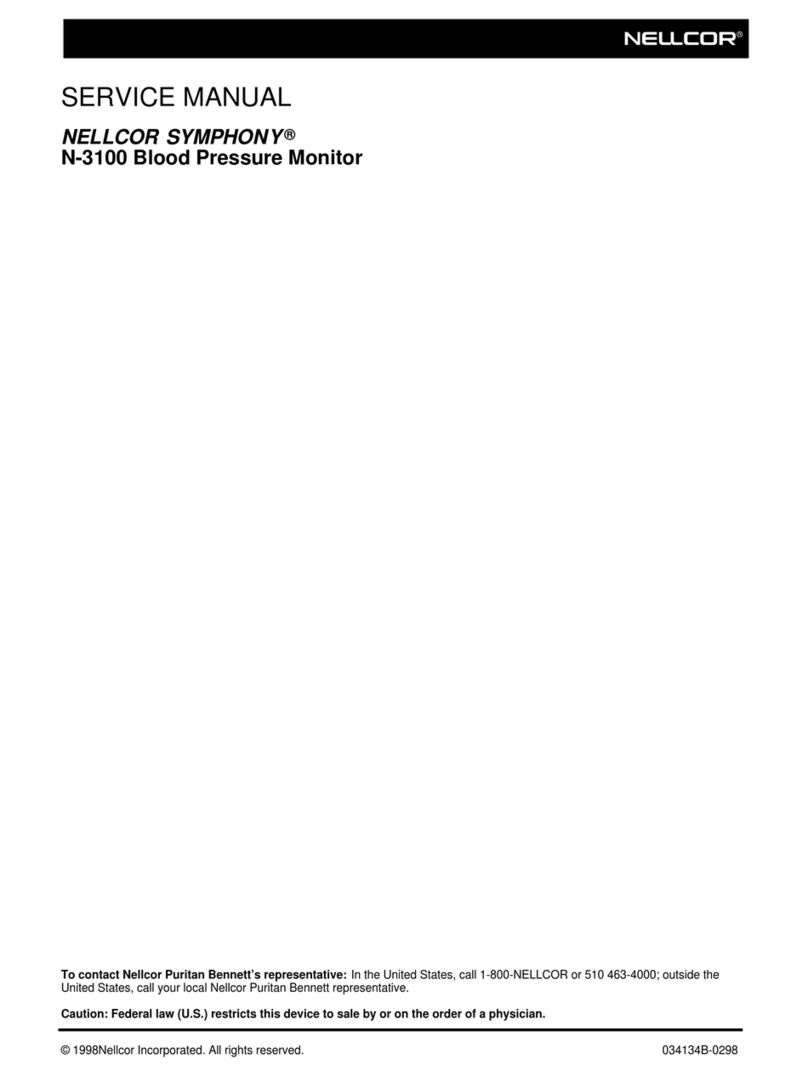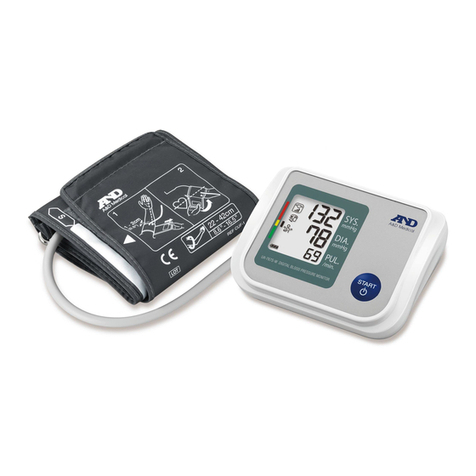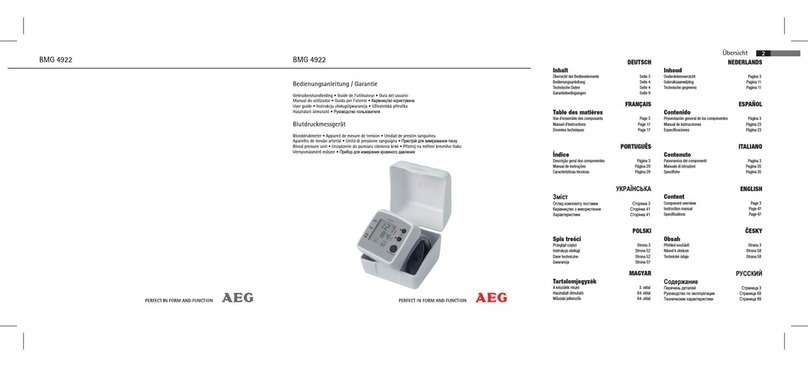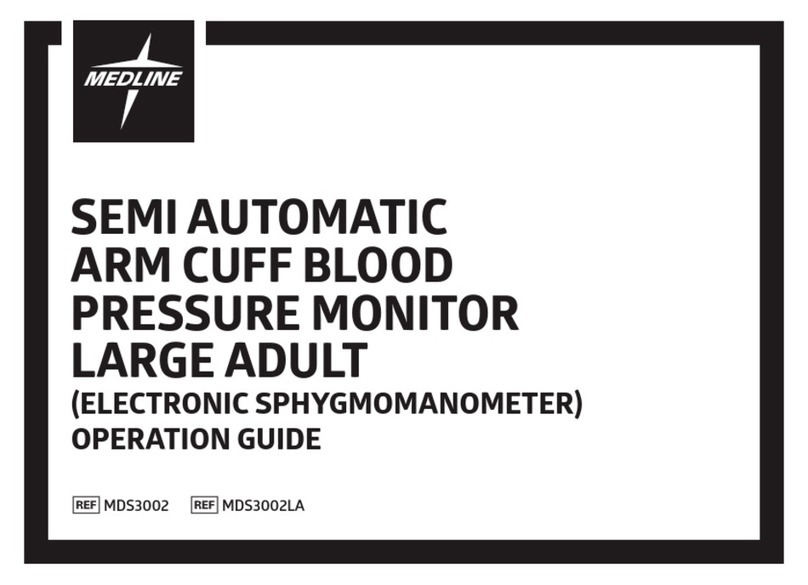
4
3. Checklist for Taking a Reliable Measurement
Avoid activity, eating or smoking immediately before the
measurement.
Sit down on a back-supported chair and relax for 5 minutes.
Keep the feet flat on the floor and do not cross your legs.
Always measure on the same arm (normally left). It is recom-
mended that doctors perform double arm measurements on a
patients first visit in order to determine which arm to measure in
the future. The arm with the higher blood pressure should be
measured.
Remove close-fitting garments from the upper arm. To avoid
constriction, shirt sleeves should not be rolled up - they do not
interfere with the cuff if they are laid flat.
Always ensure that the correct cuff size is used (marking on the
cuff).
Fit the cuff closely, but not too tight.
Make sure that the cuff is positioned 1-2 cm above the elbow.
The artery mark on the cuff (ca. 3 cm long bar) must lie over
the artery which runs down the inner side of the arm.
Support your arm so it is relaxed.
Ensure that the cuff is at the same height as your heart.
4. Taking a Blood Pressure Measurement
1. Select standard (single measurement) or
AFIB/MAM
mode
(automatic triple measurement): see details in chapter «2.».
2. Press the START/STOP button 1to start the measurement.
3. The cuff will now pump up automatically. Relax, do not move
and do not tense your arm muscles until the measurement
result is displayed. Breathe normally and do not talk.
4. When the correct pressure is reached, the pumping stops and the
pressure falls gradually. If the required pressure was not reached,
the device will automatically pump some more air into the cuff.
5. During the measurement, the pulse indicator BQ flashes in the
display.
6. The result, comprising the systolic AP and the diastolic AQ blood
pressure and the pulse rate AR is displayed. Note also the
explanations on further display symbols in this booklet.
7. When the device has finished measuring, remove the cuff.
8. Switch off the device. (The monitor does switch off automatically
after approx. 1 min.).
AF detection is only activated in AFIB/MAM mode.
You can stop the measurement at any time by pressing the
START/STOP button (e.g. if you feel uneasy or an
unpleasant pressure sensation).
This monitor is specially tested for use in pregnancy and
pre-eclampsia. When you detect unusual high readings in
pregnancy, you should measure after a short while again
(eg. 1 hour). If the reading is still too high, consult your
doctor or gynecologist.
In pregnancy the AFIB symbol can be ignored.
How not to store a reading
As soon as the reading is displayed press and hold the START/
STOP button 1until «M» BO is flashing. Confirm to delete the
reading by pressing the M-button 3.
How do I evaluate my blood pressure?
The LED traffic light indicator on the left-hand side of the display
7
indicates within which range the measured blood pressure lies. The
value is either within the optimum (green), elevated (yellow) or high
(red) range. The classification corresponds to the following ranges
defined by international guidelines (
ESH, ESC, JSH
). Data in mmHg.
The higher value is the one that determines the evaluation.
Example: a blood pressure value of 140/80 mmHg or a value of
130/90 mmHg indicates «blood pressure too high».
5. Data Memory
This device automatically stores the last 99 measurement values.
Viewing the stored values
Switch the lock switch
AO
to «unlock» position. Press the M-button
3
briefly. The display first shows «
M
»
BO
and «
A
», which stands for the
average of all stored values.
Pressing the «+» AN or the «-» AM button repeatedly enables you
to move from one stored value to another. Press the M-button
again to exit the memory mode.
Pay attention that the maximum memory capacity of 99
memories is not exceeded.
When the 99 memory is full, the
Range Systolic Diastolic Recommendation
1. blood pressure
too high
≥135 ≥85 Seek medical
advice
2. blood pressure
elevated
130 - 134 80 - 84 Self-check
3. blood pressure
normal
<130 <80 Self-check
